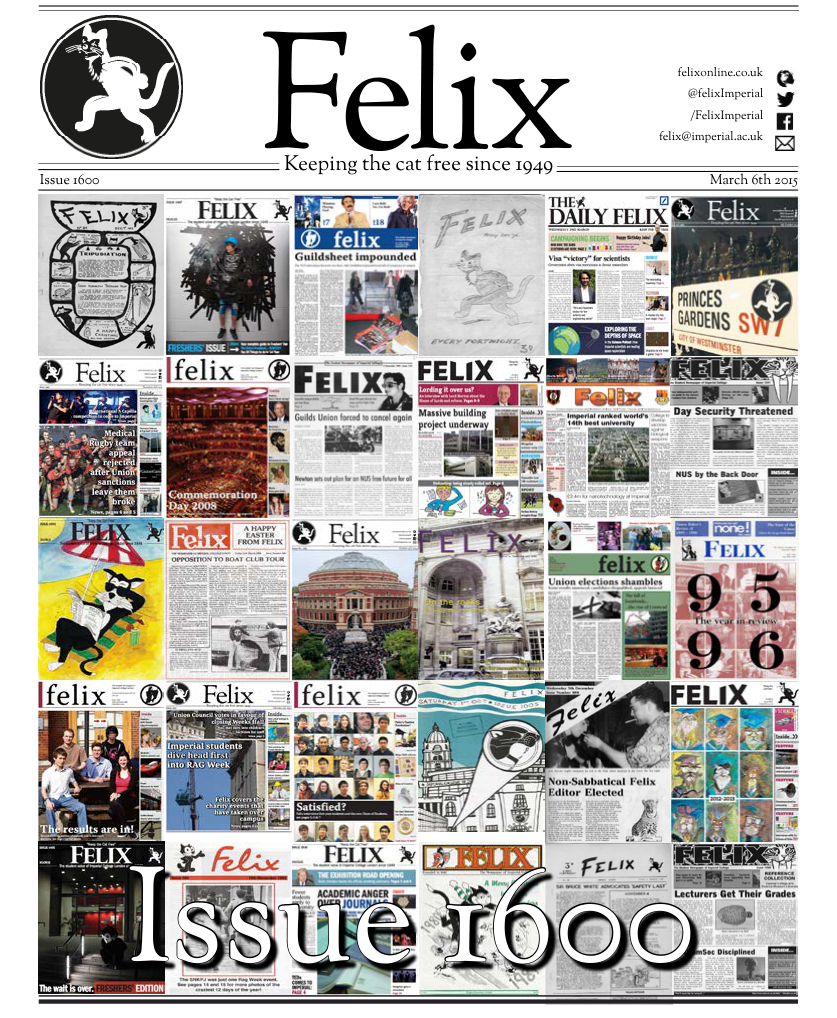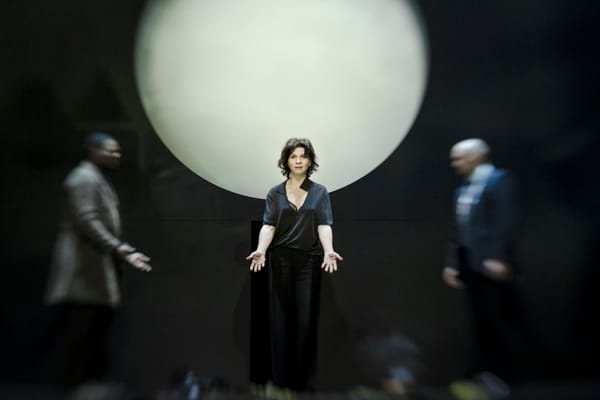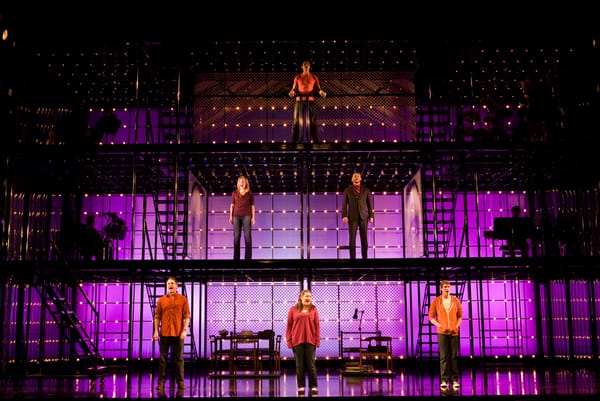1600: A Year To Go Down in History
Clara Clark Nevola takes us through the life of Giordano Bruno

A tenuous numerical link is enough to lead us from the significance of the grand history of Felix, now its 1600th issue, to 1600 AD, a year in the life of Early Modern Europe. In dear old Blighty, Elizabeth I is on the throne, busily destroying the Armada and maintaining her virginity. Martin Luther has aired his doubts on the big guy in the Vatican, and protestant reformers are giving Europe a good shake-up. The Church’s astronomical dogma, already feeling touchy after Copernicus going public on the whole sun-centric thing, is further challenged by Tycho Brahe pointing out that a new star (the supernova SN 1572) had appeared, and that the celestial sphere isn’t so immutable after all. Amidst all this, on the 17th of February 1600, a man was burned at the stake in a small square in Rome. Think of this as an obituary, almost half a millennium out of date. The obituary of a man on the border between science and religion, a man both heretic and martyr. This is the story of Giordano Bruno.
The story starts in 1548, in the town of Nola – then part of the Kingdom of Naples – where Bruno was born. He became a Dominican monk at 17 in a monastery in Naples, where he was a bit of a performing monkey thanks to his outstanding ability to memorise stuff (think Sherlock’s mind palace, but better). But he wasn’t the top of the class for long. Forbidden literature was found in his loo (a self-annotated copy of Erasmus’ writing, not a 16th century copy of Nuts magazine) and he developed a reputation for supporting free speech – the horror! – as well as spreading certain non-Catholic views.
Think of this as an obituary, almost half a millennium out of date
The Kingdom of Naples wasn’t a particularly liberal place at the time so Giordano deemed it best to leave the monastery and start travelling towards the more liberal Venice. From here he wandered around for more than a decade, crossing into France, Britain and Germany. He taught in Universities; visited monarchs, diplomats, and intellectuals; and published a good deal of critical pamphlets on philosophy, religion and astronomy that didn’t make his too popular with many of his contemporaries and colleagues.
He eventually returned to Italy after he heard news of a job offer as Professor of Maths at the University of Padua. He didn’t get it; Galileo was hired instead. I’m sure he got that standard email about how the quality of applicants had been very high that year. But career disappointments weren’t the only thing coming for him: the Inquisition got wind of his views and decided to crack down.
A seven year trial, dotted with imprisonments, culminated in a death sentence. He was publically burned at the stake in Rome, in Campo de’ Fiori, his mouth filled with a wooden block to stop the public hearing his dangerous opinions. So that was that.
End of life, end of story. Another heretic got rid of. And yet, in many ways, the story of Giordano Bruno started in 1600 with his death. The Inquisition tortured and murdered people for beliefs that we today uphold as scientific and liberal. The heretics of yesteryear are the saints of today – Galileo is a prime example in case. With Giordano Bruno, the case is not so clear. Both his life choices and his writings put him on an ambiguous boundary between science and religion: there is a lunar crater named after him, yet his commemorative statue in Campo de’ Fiori shows him in his Dominican robes. He upheld the Copernican view of the universe at a time when very few did, and went beyond that to suggest that all starts were suns, each with their own planets around them; he stated that the universe was infinite, without a centre and containing multiple worlds. Is he the forbearer of modern cosmological theory and a martyr of the multiverse hypothesis? Should we, young disciples of a science-centric atheism, herald him as our patron saint? If you’re nodding vigorously and preparing a little shrine for him in your room, know that you are not alone in your new-found realisation. And yet, before you buy flights to Rome to go on a pilgrimage to his death-site, think on this: Giordano Bruno probably never carried out an astronomical observation in his life.
He upheld ideas that questioned the restricted doctrine of his time
Yes, he was a proponent of Copernicus’ heliocentric theory. Yes, he wrote a book called On the Infinite Universe and Worlds. But his many worlds theory was, above all, a pantheistic interpretation of the universe. The scientific theory is a metaphor for a philosophical, spiritual approach to existence. Had he been a brilliant mathematician who used thorough astronomical observations to formulate a theory on the existence of other solar systems, chances are that he would have been burned as a heretic none the less, as the Pope was none too open to new ideas concerning the universe. But Giordano Bruno wasn’t a scientist by any standard. Is he a saint for Cosmology? No. Did he uphold ideas that questioned the restricted, hemmed in doctrine of his time? Yes. Did he have a lasting effect in promoting a philosophy that emphasised the centrality of human intellect? Also yes. So if you’re buying your tickets for Rome, go ahead and count me in, because I’m a fan girl. But let’s remember Giordano Bruno for who he was and what he promoted: the importance of free speech, and the tolerance of views based both on spirituality and insight alongside those based on observation and measurement. Both have their place in our world.









